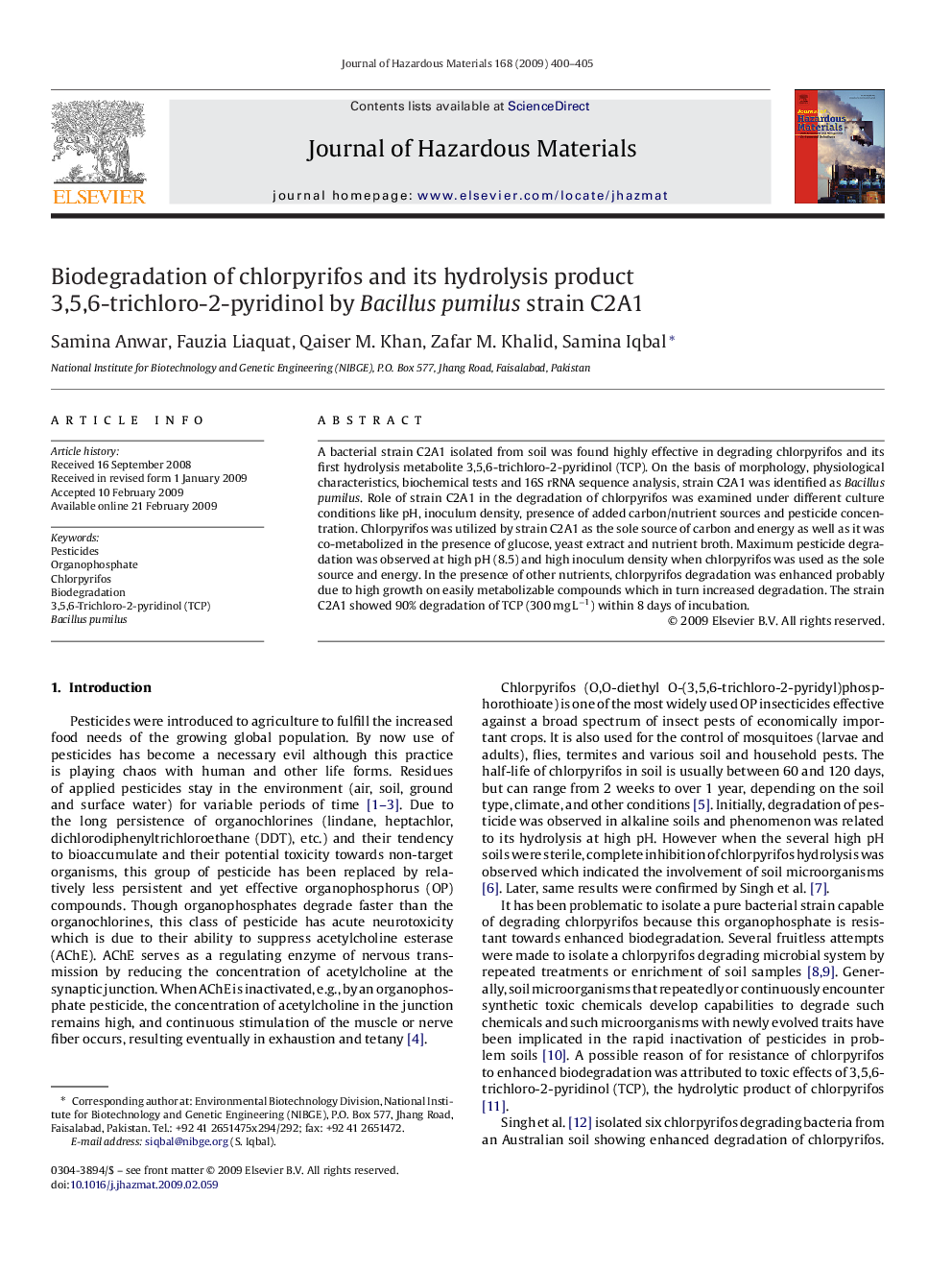| Article ID | Journal | Published Year | Pages | File Type |
|---|---|---|---|---|
| 581357 | Journal of Hazardous Materials | 2009 | 6 Pages |
Abstract
A bacterial strain C2A1 isolated from soil was found highly effective in degrading chlorpyrifos and its first hydrolysis metabolite 3,5,6-trichloro-2-pyridinol (TCP). On the basis of morphology, physiological characteristics, biochemical tests and 16S rRNA sequence analysis, strain C2A1 was identified as Bacillus pumilus. Role of strain C2A1 in the degradation of chlorpyrifos was examined under different culture conditions like pH, inoculum density, presence of added carbon/nutrient sources and pesticide concentration. Chlorpyrifos was utilized by strain C2A1 as the sole source of carbon and energy as well as it was co-metabolized in the presence of glucose, yeast extract and nutrient broth. Maximum pesticide degradation was observed at high pH (8.5) and high inoculum density when chlorpyrifos was used as the sole source and energy. In the presence of other nutrients, chlorpyrifos degradation was enhanced probably due to high growth on easily metabolizable compounds which in turn increased degradation. The strain C2A1 showed 90% degradation of TCP (300 mg Lâ1) within 8 days of incubation.
Related Topics
Physical Sciences and Engineering
Chemical Engineering
Chemical Health and Safety
Authors
Samina Anwar, Fauzia Liaquat, Qaiser M. Khan, Zafar M. Khalid, Samina Iqbal,
